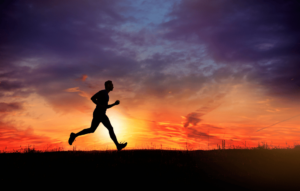Today we’re tackling a prominent debate for modern athletes – tearing up the trails or pounding the pavement? Running the trees or running the streets? Jogging in the jungle or sprinting through suburbia?
Okay, puns aside, running is one of the simplest yet most effective ways to boost your fitness, clear your mind, and connect with your body. But the type of running you choose – whether it’s on nature trails or on pavement – can be a totally different world of personal experience and overall results.
Trail running and urban running both have their loyal followers and distinct benefits. While trail running is praised for its challenging terrain and fuller-body engagement, urban running is often favored for its obvious convenience and potential for high-speed training. But when it comes down to what’s better for your body, which style comes out on top?
In this blog, we’ll break down the physical differences between trail and urban running, explore how each affects your body, and ultimately help you decide which path aligns best with your fitness goals. Whether you’re a dedicated city runner looking to take on more natural terrain or a trail runner considering some urban mileage, this comparison will help you get the most out of every stride.
Terrain and Muscular Engagement
The biggest difference between trail running and urban running obviously lies in the terrain itself; this actually has a pretty significant impact on how your muscles engage during each run. When you hit the trails, you’re likely to encounter a variety of surfaces: dirt paths, rocky sections, muddy patches, and roots to hop over. The constant shifts in elevation and ground texture require your body to work harder to maintain balance, agility, and stability. This makes trail running a full-body workout, engaging not just the major muscle groups, but also the often-overlooked stabilizer muscles in your ankles, calves, and core. Every step is different from the last, which means your body needs to adapt quickly, activating more muscle fibers to navigate the varied terrain.

In contrast, urban running typically takes place on flat, predictable surfaces like concrete sidewalks, asphalt roads, or running tracks. These consistent terrains allow you to get into a steady rhythm, focusing on speed and pace rather than environmental navigation. Because of this, urban running tends to engage the primary muscles used in running – quads, hamstrings, calves, and glutes – more repetitively. While this promotes the development of strong, powerful strides and better pacing, the repetitive nature of the motion doesn’t stimulate the stabilizing muscles to the same extent as trail running does.
So, which is better for your body? It largely depends on what you’re aiming for. If your goal is to build well-rounded strength, balance, and agility, the varied terrain of trail running will challenge your body in ways that flat, urban routes can’t. On the other hand, if you’re looking to hone your speed, perfect your form, or simply enjoy a steady, rhythmical run, urban running offers the structured environment to do just that.
Impact on Joints and Injury Prevention
Considering the impact on your joints is another crucial part of this discussion. Where you run has a significant effect on how much stress your body absorbs, and this can influence your injury risk over time.
Trail Running is generally more forgiving on your joints. Trails are made of softer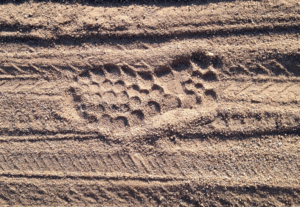 surfaces like dirt, grass, and sand, which reduce the amount of impact absorbed by your knees, hips, and ankles. This decreased impact is particularly beneficial for those who have a history of joint pain or are looking to reduce the wear and tear on their bodies. However, the benefits come with some added risks. The unpredictable nature of trail surfaces – roots, rocks, sudden inclines, and uneven ground – can lead to rolled ankles, slips, or falls if you’re not careful. Proper footwear with good grip and support, along with a cautious approach to technical terrain, can significantly reduce these risks.
surfaces like dirt, grass, and sand, which reduce the amount of impact absorbed by your knees, hips, and ankles. This decreased impact is particularly beneficial for those who have a history of joint pain or are looking to reduce the wear and tear on their bodies. However, the benefits come with some added risks. The unpredictable nature of trail surfaces – roots, rocks, sudden inclines, and uneven ground – can lead to rolled ankles, slips, or falls if you’re not careful. Proper footwear with good grip and support, along with a cautious approach to technical terrain, can significantly reduce these risks.
Urban Running, on the other hand, exposes your body to more repetitive impact. Running on hard surfaces like concrete and asphalt places greater stress on your joints with each step. This can contribute to overuse injuries such as shin splints, runner’s knee, or plantar fasciitis, especially if you’re logging a lot of miles without sufficient recovery time. However, the predictability of urban routes can also be a plus. The steady, flat surfaces reduce the risk of sudden twists and falls, allowing you to focus on your stride and pace without as much concern for where you place each foot.
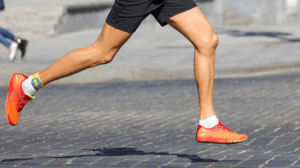
So, which option is better for injury prevention? If you’re seeking to reduce joint impact and develop joint stability, trail running’s softer terrain can be a great choice – provided you’re prepared for its unpredictable elements. If your goal is to maintain a controlled running routine with less focus on variable surfaces, urban running can work well, as long as you pay attention to the potential for overuse injuries and make time for proper recovery.
Ultimately, both styles of running carry their own risks and benefits for your joints. By understanding how terrain affects joint impact and taking the right precautions – whether that’s wearing appropriate footwear or balancing your weekly mileage – you can enjoy a safe and rewarding running experience, wherever your feet may take you.
Cardiovascular and Aerobic Benefits
Another key difference between trail running and urban running lies in how they challenge your cardiovascular and aerobic systems. While both styles of running are excellent for improving your heart and lung health, the terrain and elevation changes play a significant role in determining the intensity and type of cardiovascular workout you’ll get.
Trail Running often involves varying elevations, unpredictable terrain, and fluctuating speeds, creating a natural form of high-intensity interval training (HIIT). As you navigate up steep inclines, your heart rate increases, demanding greater effort and power output from your legs and cardiovascular system. On the way down, the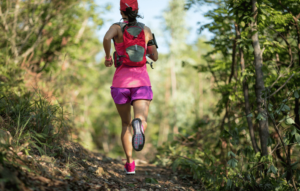 downhill sections act as recovery periods, although they still require balance and controlled effort. These constant changes in intensity help improve overall aerobic capacity, endurance, and the ability to recover quickly from intense bursts of effort.
downhill sections act as recovery periods, although they still require balance and controlled effort. These constant changes in intensity help improve overall aerobic capacity, endurance, and the ability to recover quickly from intense bursts of effort.
Urban Running, with its typically flat and even surfaces, allows for a more consistent cardiovascular workout. The smooth, predictable ground enables you to maintain a steady pace and rhythm within a specific heart rate zone, which is ideal for building your aerobic base – the foundation for long-distance endurance. Urban runs are great for tempo work and achieving specific performance goals like speed, mileage, or cadence. By sustaining a controlled pace, urban runners can work on developing their cardiovascular endurance in a more structured way, making it easier to track progress and adapt training plans.
So which is better for cardiovascular fitness? If you’re looking to build explosive power, increase your VO2 max, and improve your body’s ability to adapt to fluctuating intensities, trail running offers the kind of challenging workout that can take your cardiovascular health to new heights. However, if your goal is to work on steady-state endurance, improve your pacing, and boost your overall stamina, urban running provides the perfect environment to focus on these aspects.
Both styles contribute to cardiovascular health in different ways, and again, depending on your goals, alternating between trail and urban running can provide a balanced approach to developing both aerobic endurance and cardiovascular strength.
Mental Health and Emotional Well-being
The benefits of running extend far beyond just physical health; they also have a profound impact on mental and emotional well-being. However, trail running and urban running are very different psychological experiences, each with its own unique set of perks.
Trail Running provides an immersive escape from the noise and busyness of daily life. Being surrounded by nature can create a meditative experience, reducing stress and promoting mental clarity. The act of navigating through forests, hills, and open landscapes fosters a deep sense of connection to the environment, which can be incredibly grounding. Research has shown that spending time in nature reduces cortisol levels (the stress hormone), enhances mood, and can even improve creativity. The ever-changing scenery and the need to stay focused on the terrain also provide a sort of mental workout, pulling you into the present moment and helping to break free from overthinking or dwelling on stressors.
In contrast, Urban Running often taps into the energy and liveliness of city life. Running through bustling streets, alongside traffic, and amongst other runners can be stimulating and energizing. For those who thrive on the hustle and bustle, urban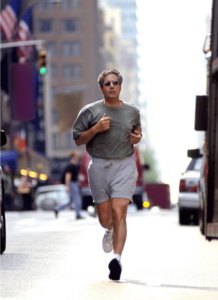 running offers a chance to feel part of something bigger, feed off the city’s vibe, and find a motivating rhythm in the sounds and sights around you.
running offers a chance to feel part of something bigger, feed off the city’s vibe, and find a motivating rhythm in the sounds and sights around you.
Urban environments also tend to be a bit more convenient for runners, which can encourage more consistent runs and make it easier to maintain a regular running routine – an important factor for both physical and mental health benefits. However, urban running can have its downsides. The constant noise, potential hazards like traffic, and repetitive scenery might make it harder for some to experience the same sense of calm and mental renewal that trail running provides – this can create mental friction and in some cases make people less likely to go for a run at all.
Trail running, on the other hand, while beneficial for mental health on a totally different level, can be less accessible for those who live in densely populated areas, requiring travel to reach suitable trails.
When it comes to mental and emotional benefits, both trail and urban running have their pros and cons. If you’re looking to unplug, reconnect with nature, and find peace through movement, trail running can offer a profound mental boost. However, if you’re energized by the city environment, appreciate the convenience, and find the urban landscape to be stimulating and motivating, urban running can be just as rewarding for your mental health.
Ultimately, it’s about what works best for you. Whether it’s the solitude of the trails or the vibrancy of city streets, running has the power to improve your mood, clear your mind, and strengthen your emotional well-being.
Final Thoughts
So, which style of running is better for your body – trail running or urban running? The answer depends on your fitness goals, preferences, and what you’re seeking from your running routine.
If you’re looking to build overall strength, agility, and balance, the varied terrain of trail running will push your body in new ways, enhancing your stabilizer muscles and offering a mental escape into nature. On the other hand, if your focus is on maintaining consistent speed, honing your form, and maximizing convenience, urban running provides a steady, structured environment perfect for improving pace and cardiovascular endurance.
Both types of running come with their own risks and benefits. Trail running is gentler on the joints due to its softer surfaces, but the unpredictable terrain requires more attention to foot placement and stability. Urban running offers predictability and convenience, allowing for targeted training, but the repetitive impact on hard surfaces may require extra attention to recovery and injury prevention.
Ultimately, mixing trail and urban running into your training can provide the best of both worlds – a combination of strength, agility, and mental refreshment from trail running, and speed, endurance, and accessibility from urban running. Whichever path you choose, the most important thing is to cultivate joy in running, explore new environments, and tailor your routine to what keeps your body and mind healthy, strong, and motivated.
